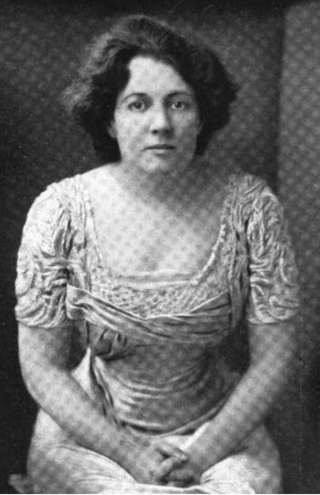
Ruth Roland was an American stage and film actress and film producer.

Bessie Barriscale was an American actress who gained fame on the stage and in silent films.

Louise Lorraine was an American actress.

Marguerite De La Motte was an American film actress, most notably of the silent film era.

Alberta Vaughn was an American actress in silent motion pictures and early Western sound films. She appeared in some 130 motion pictures.

Earle Williams was an American stage actor and film star in the silent era.

Dorothy Revier was an American actress.

Ruth Hiatt was an American actress in motion pictures beginning in the silent film era. She is best known for performing in 1920s comedies directed by Jack White, Norman Taurog, and Mack Sennett.

Gertrude Olmstead was an American actress of the silent era. She appeared in 56 films between 1920 and 1929. Her last name was sometimes seen as Olmsted.

Ethel Grey Terry was an American actress of the silent era. She is best remembered for her role in The Penalty with Lon Chaney.

Eileen Percy was an Irish-born American actress of the silent era. She appeared in more than 60 films between 1917 and 1933.

Shirley Grey was an American actress. She appeared in more than 40 films between 1930 and 1935.

Alma Tell was an American stage and motion picture actress whose career in cinema began in 1915 and lasted into the sound films of the early 1930s.

Cader Edwards Davis was an American actor, producer, and playwright of vaudeville and the silent film era, known as a character actor. Born and raised in the San Francisco Bay Area, he was an ordained Christian minister and first achieved prominence as a sensational orator and lecturer, becoming known as the "poet-preacher" and the "Talmage of the West", before leaving the pulpit for an acting career. He wrote and starred in several original plays and vaudeville sketches, and appeared in over 50 films. In New York he was a president of the National Vaudeville Artists Association and the Green Room Club. In Hollywood he was a founder and president of the Masonic 233 Club. He was married to several actresses, including Adele Blood, who also appeared in some of his productions.

Vera McCord was an American stage actress. She also wrote, directed and produced a silent film, The Good-Bad Wife (1921).
Dorothy Smoller was an actress and dancer known for the 1919 film Out of the Fog. She was also featured on the 1919 US Vogue cover in a photograph taken by photographer Adolph de Meyer.
West Niger was a steam cargo ship built in 1919–1920 by Southwestern Shipbuilding Company of San Pedro for the United States Shipping Board (USSB) as part of the wartime shipbuilding program of the Emergency Fleet Corporation (EFC) to restore the nation's Merchant Marine. The freighter spent her entire career in the Pacific connecting the West Coast of the United States with the Chinese and Japanese ports in the Far East. Early in 1928, the ship, together with ten other vessels, was sold by the Shipping Board to the States Steamship Co. and subsequently renamed Nevada. In September 1932, the vessel, while on her regular trip to Japan, ran aground in foggy weather on Amatignak Island and subsequently broke into three parts and sank with the loss of thirty four out of thirty seven men.

Ruth Mildred Dwyer was an American film actress. She had a number of starring roles in the silent era, most famously as Buster Keaton's leading lady in Seven Chances (1925). Dwyer mostly retired in 1928 and played a number of uncredited roles in sound films, but retired from the film business completely in the 1940s.

Norma Gould was an American dancer, dance educator, and choreographer.

Katherine Kiernan Griffith, also seen as Catherine Kiernan, was an American character actress on stage and in silent films.



















